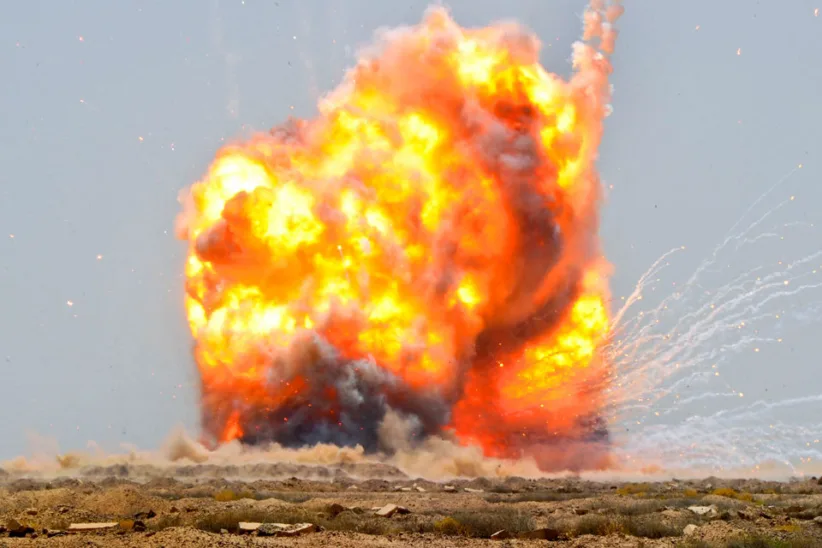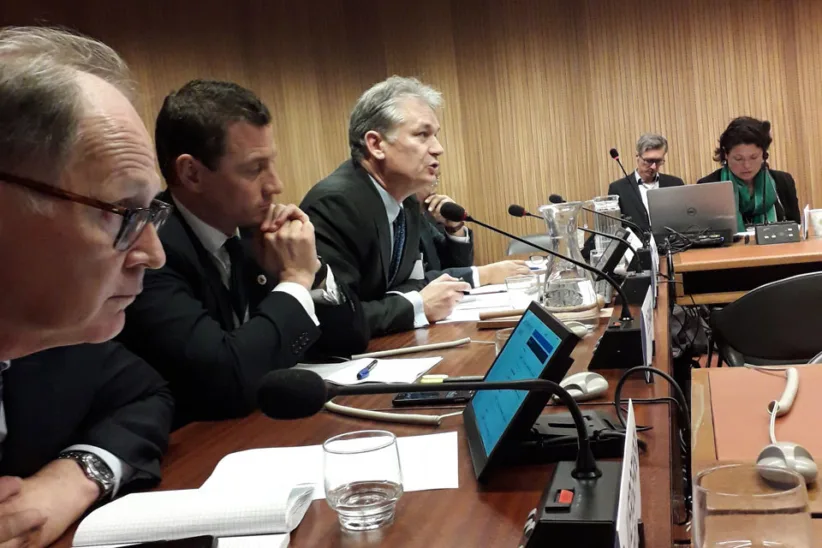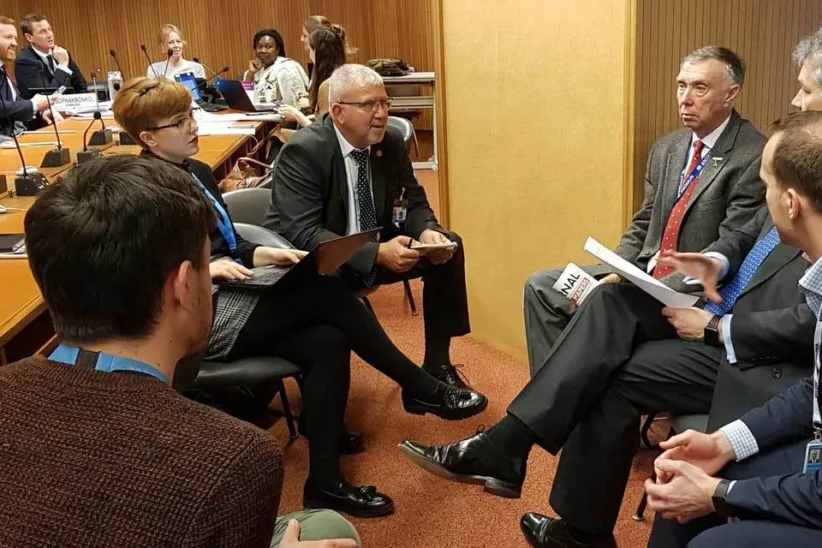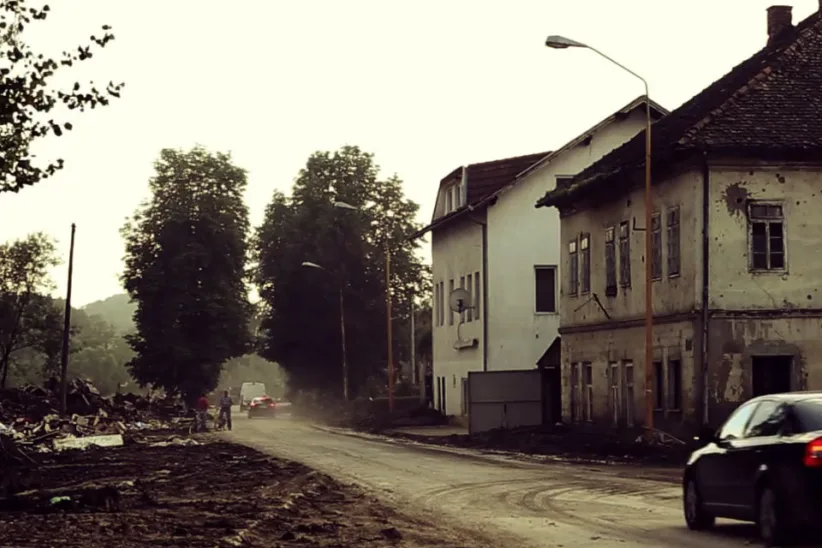The increasing profile of the environment in mine action is creating momentum for sector-wide policies to reduce harm and address climate change risks.

The increased global media attention on the environment in recent years was reflected during this February’s International Meeting of Mine Action National Directors and UN Advisers in Geneva. In this blog, Linsey Cottrell and Kendra Dupuy report on the growing interest in the environment within the mine action sector, on the outputs of a workshop organised by NPA, CEOBS and The HALO Trust during the event, and on how the momentum to address the issue could be maintained through a new working group.
The rising profile of the environment in mine action
It was very encouraging to have the environment highlighted in several of the presentations at this year’s National Mine Directors Meeting in Geneva. A plenary session was dedicated to mine action and the environment, with speakers from Action on Armed Violence, the United Nations Mine Action Service (UNMAS) and the African Leadership Centre.1 The session included an overview of the impact of conflict on the environment, lessons learnt, the need for tailored mine clearance solutions within certain environments to minimise adverse impacts, and the need for an integrated socio-environmental approach.
Another session, which was hosted by UNMAS, focused on the legacy of the conflicts in Libya and highlighted some of the on-going environmental risks from large stockpiles and bulk stores containing highly hazardous liquid fuel propellants (such as unsymmetrical dimethylhydrazine) and oxidisers (red fuming nitric acid). Although many of these stockpiles are located away from population centres, they still present significant environmental risks given the nature and toxicity of these substances. Libya is highly reliant on groundwater resources and any disposal method must ensure that it is environmentally acceptable and does not result in adverse and long-term environmental impacts.
Norwegian People’s Aid (NPA), the Conflict and Environment Observatory (CEOBS), and The HALO Trust co-organised a side event at the meeting on the environmental impact of mine action and the need for climate change adaption. The event aimed to raise discussion points and thoughts on how the mine sector can look to reduce its environmental footprint, and incorporate climate change concerns into planning and operations. Our panellists from the Cambodian Mine Action Authority, Fenix Insight Ltd, Geneva International Centre for Humanitarian Demining (GICHD), The HALO Trust and the United Nations Development Programme (UNDP) each provided introductions to key aspects of mine action and the environment.
The introduction was followed by discussions within five breakout groups, with each group asked to discuss a topic area and then reconvene to share ideas and points raised. Participation in the groups was excellent, creating a useful platform to highlight some of the issues and challenges ahead in this area.

Issues and challenges highlighted in the workshop
The nature of mine action work typically results in high fuel use, a need for vegetation clearance, the generation of waste, detonation of large quantities of explosives and the use of heavy machinery and vehicles. The side event setting proved a very valuable way of highlighting some of the environmental thinking and concerns among participants. As a large global operator, The HALO Trust has a wide logistical network and faces additional challenges from working in remote areas. However, HALO also recognise that there are plenty of opportunities for improvements and they have begun doing things differently. They have begun to review business travel, consider carbon-offsetting schemes, use solar power in their operations and cut the use of plastics, as well as seeking to work more closely with local environmental NGOs.
The disposal and treatment of explosive and hazardous materials is a key environmental issue within the sector. This extends to small arms, which were highlighted by GICHD as the largest component by weight. Small arms are commonly burnt as a means of disposal but they contain toxic heavy metals, such as lead and cobalt-tungsten alloys, and the environmental impact of disposal needs to be addressed. Neither the NATO Support and Procurement Agency (NSPA) or the NATO Maintenance and Supply Agency (NAMSA) allow open burning/open detonation (OBOD) when contracting stockpile destruction. The humanitarian mine action sector must also demonstrate that all practical and responsible efforts are in place to minimise the environmental impact of disposal.
The group discussions also highlighted some practical steps that can be taken to improve environmental protection in mine action and disarmament operations. These can be as simple as banning single-use plastic water bottles and switching to trucked-in or treated water systems. It may, however, take time to build confidence in the cleanliness of the water source.
Using reliable waste contractors was also seen as key, with the need for proper due diligence to ensure that contractors are working responsibly and carrying out their full duty of care when handling and disposing of waste. It is also important to adhere to the Land Release principles, as per IMAS 07.11, 08.10 and 08.20. This helps to minimise the land area processed, to work more efficiently and to wholly implement survey activities. It also means that potentially environmentally disruptive clearance, and the use of machines in particular, is the last option.
Perhaps more difficult steps – since longer term investment is required – include switching to renewable energy such as wind and solar in operations. Making greater use of drone technology to assess land use before clearance was also discussed, with follow up surveys post-clearance to confirm conditions and identify whether any other any remedial action is required.
It may seem overwhelming but it can be done. In the Falkland Islands, where stringent environmental operating procedures apply, Fenix Insight Ltd explained how the effective implementation of environmental management during mine clearance activities can be achieved. They reflected on their own experience of working within an ecologically sensitive environment, with local penguin colonies and a sensitive peat landscape, and where restrictions on OBOD were in place.

The need for clearer policies and better guidance
Although guidance may be available, the group discussions indicated that there was a need for better knowledge sharing, linking organisations to make sure all teams are educated to the same level, and collaborating with technology experts to help foster innovation. Funding to support more research and education, with the provision of guidance on environmental risk assessment and alternatives to detonation would also be welcomed.
When seeking to understand how environmental management improvements can be further embedded, lessons can perhaps be learnt from how gender mainstreaming has been introduced across mine action. In this respect, buy-in from senior leadership within organisations, as well as ‘bottom-up’ support from field operatives will be key to success. It is also important to establish terms of reference so all understand why it is important and what is trying to be achieved. Support and advice may also come from elsewhere, and the mine action community should look externally for examples of good practice, including experience from ‘greening’ the United Nations Blue Helmets and the International Committee of the Red Cross’s Green Response initiative.
We also discussed the Cambodian Mine Action Authority’s plans to implement a new Mine Action Standard on environmental management. It is a useful national example of where compliance will need to monitored, and constructive feedback encouraged on how the standard and practices across all operators can be improved year-on-year, all the while keeping abreast of ‘best practice’.

Climate change impacting mine action
The effects of climate change and unpredictable weather patterns have the potential to significantly impact mine action activities. The UNDP shared their experience from the impact of heavy rain and flooding across northern, eastern and central parts of Bosnia and Herzegovina in 2014, which resulted in more than 3,000 recorded landslides. In spite of the flooding affecting an estimated 47.5km2 of land suspected to be contaminated with landmines, no mine incidents were recorded. However the flooding meant that the existing records on the location of minefields became unreliable and reassessment was required.
There will be an increasing requirement to incorporate climate change into the development of work plans. For example, the need to consider the choice of equipment and working patterns, or to vary clearance techniques due to access restrictions brought about by extended rainy seasons and flooding. Some areas previously considered as low priority for survey and clearance – such as coastal locations, river banks or steep slopes – may also need to be re-prioritised or targeted if they are assessed as being more vulnerable to climate change. If left untouched, there is a risk that such areas may become more technically challenging and costly to clear should the effects of climate change take place. In the longer term, the impact of land use pressures linked to population movements and climate refugees may also require greater consideration.
Taking environmental mainstreaming forward with a working group
Whilst some National Mine Action Authorities (NMAA) have or are looking to adopt specific environmental management principles in mine action, this is not evident across the board. For countries where the NMAA has still to fully develop, or to adopt a set of national mine action standards covering the environment, the use of guidance such as IMAS 07.13 to establish a framework for environmental management is encouraged.
Awareness-raising and knowledge sharing are important. This should include efforts to help donors to fully understand mine action’s environmental remit in order to justify funding requests to support mainstreaming initiatives.
It has been proposed to establish a sector-wide Environment Working Group (EWG) to share ideas and best practice, lessons learnt and opportunities to showcase future case studies where initiatives have worked well. Please email KenDup785 at npaid.org if you are interested in joining. Once we have heard from interested parties, we will finalise arrangements for future EWG meetings.
Our thanks again to all those who participated and we look forward to seeing this progress across the mine action community.
Linsey Cottrell is CEOBS’ Environmental Policy Officer, Kendra Dupuy is a Senior Environmental Adviser at Norwegian People’s Aid. Our joint project is funded by the Norwegian Ministry of Foreign Affairs.
